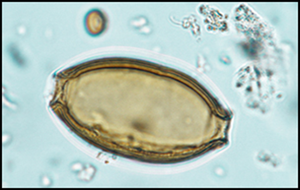Crossref Citations
This article has been cited by the following publications. This list is generated based on data provided by
Crossref.
Fundurulic, Ana
Valenti, Ilenia
Celant, Alessandra
Barbaro, Barbara
Costa, Mafalda
Manhita, Ana
Severi, Egidio
Barrocas Dias, Cristina
and
Magri, Donatella
2022.
Millets and Cereal Meals from the Early Iron Age Underwater Settlement of “Gran Carro” (Bolsena Lake, Central Italy).
Sustainability,
Vol. 14,
Issue. 7,
p.
3941.
Warinner, Christina
Korzow Richter, Kristine
and
Collins, Matthew J.
2022.
Paleoproteomics.
Chemical Reviews,
Vol. 122,
Issue. 16,
p.
13401.
Hebelstrup, Kim Henrik
Azariadis, Aristotelis
Cordes, Adam
Henriksen, Peter Steen
and
Brinch-Pedersen, Henrik
2023.
Prehistoric Plant Exploitation and Domestication: An Inspiration for the Science of De Novo Domestication in Present Times.
Plants,
Vol. 12,
Issue. 12,
p.
2310.
Fundurulic, Ana
Manhita, Ana
Filipe, Vanessa Galiza
Henriques, José Pedro
Marques, António
Celant, Alessandra
Magri, Donatella
and
Barrocas Dias, Cristina
2023.
Archaeological Evidence for the Dietary Practices and Lifestyle of 18th Century Lisbon, Portugal—Combined Steroidal Biomarker and Microparticle Analysis of the Carbonized Faecal Remains.
Separations,
Vol. 10,
Issue. 2,
p.
85.
Driscoll, Joshua
and
Damm, Jacob C.
2023.
Chemistry in the Service of Archaeology.
Vol. 1446,
Issue. ,
p.
11.
Mula, Tristan
2023.
New Methods for Establishing Time of Death when Dealing with Natural Mummification from Bog Environments .
COMPASS,
Vol. 3,
Issue. 2,
p.
147.
Burnett, A.
Dennis, R. S.
Daled, S.
Deforce, D.
De Clerck, L.
and
Dhaenens, M.
2023.
Applications of Mass Spectrometry for the Provision of Forensic Intelligence.
p.
265.
Astudillo-Clavijo, Viviana
Varella, Henrique
Mankis, Tobias
and
López-Fernández, Hernán
2024.
Historical Field Records Reveal Habitat as an Ecological Correlate of Locomotor Phenotypic Diversity in the Radiation of Neotropical Geophagini Fishes.
The American Naturalist,
Vol. 204,
Issue. 2,
p.
147.
Kapcia, Magda
Korczyńska-Cappenberg, Marta
Lityńska-Zając, Maria
Wacnik, Agnieszka
Głód, Anna
and
Moskal-del Hoyo, Magdalena
2024.
Plant cultivation and diversity at the early neolithic settlement in Biskupice in Poland.
Scientific Reports,
Vol. 14,
Issue. 1,
McClatchie, Meriel
2024.
Encyclopedia of Archaeology (Second Edition).
p.
168.
Sirovica, Filomena
Šoštarić, Renata
and
Knežić, Dolores
2024.
In the ratio of volume to finds: Distribution of plant remains at the Ivanec–Stari Grad site, and early-medieval dietary habits in the Sava-Drava interfluve.
Journal of Archaeological Science: Reports,
Vol. 58,
Issue. ,
p.
104699.
Christenhusz, Maarten J. M.
and
Hollingsworth, Peter M.
2024.
The genome sequence of common knotgrass, Polygonum aviculare L. (Polygonaceae).
Wellcome Open Research,
Vol. 9,
Issue. ,
p.
112.



